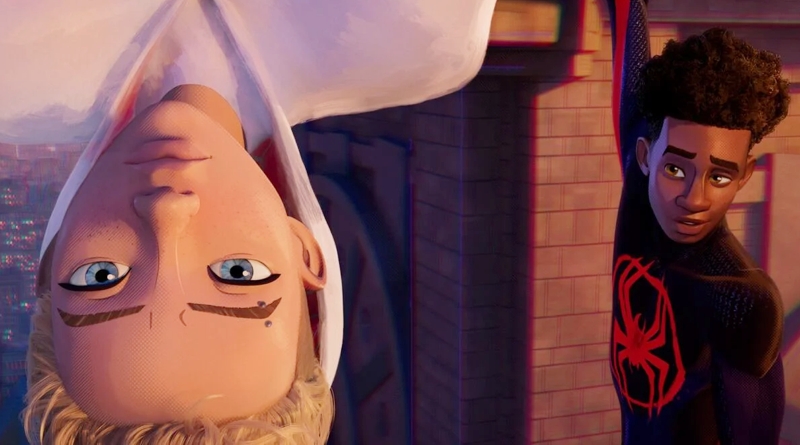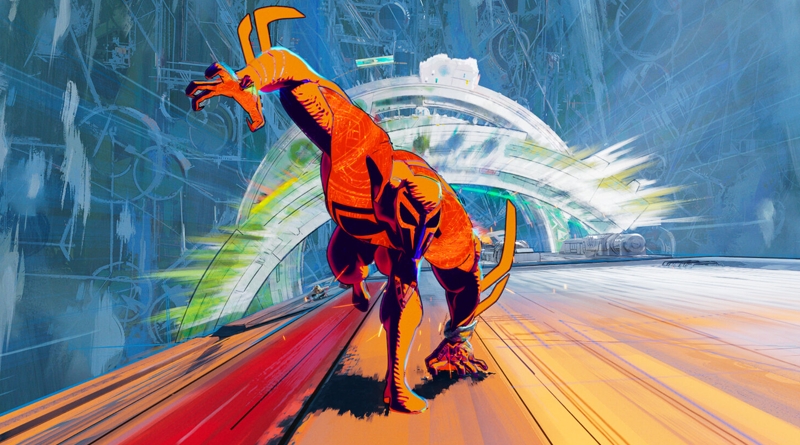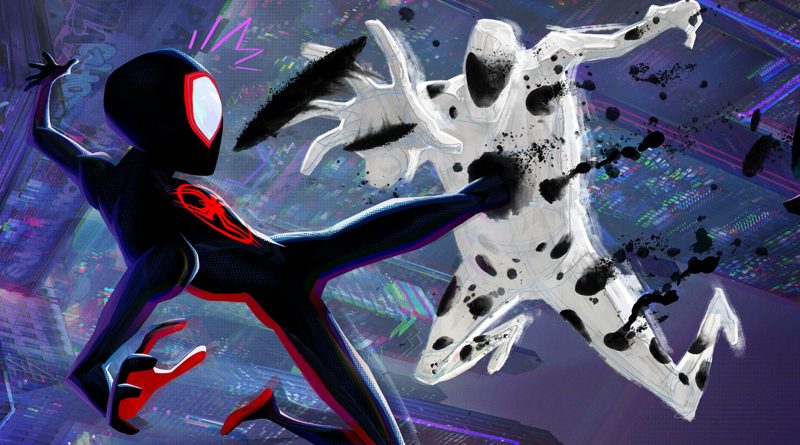Spider-Man: Across the Spider-Verse (2023) Review
Spider-Man: Into the Spider-Verse is one of the best Spider-Man movies ever made. The 2018 animated feature has undoubtedly set the bar high with its cel-shaded and comic-book-style animation and entertaining storyline. And not to forget, top-notch action sequences and well-established characters all around. A follow-up that exceeds, let alone matches the greatness of the first movie is no easy feat.
But co-directors Joaquim Dos Santos, Kemp Powers and Justin K. Thompson, who took over Into the Spider-Verse original trio (Bob Persichetti, Peter Ramsey and Rodney Rothman) manage to achieve the impossible. Here, the follow-up — Spider-Man: Across the Spider-Verse — has most of the things that a great sequel should be: a mix of solid character-driven storytelling with enough heart, action, humour and dramatic tension. The latter elevates the sequel into a different ball game as the story — credited to Phil Lord, Christopher Miller and Dave Callaham — takes the multiverse concept previously established in the first movie and gives it a more personal and yes, even unexpectedly darker spin.
The change-of-pace narrative approach may sound as if the Spider-Verse saga radically deviates from the first movie’s meta and irreverent charm that made Spider-Man: Into the Spider-Verse such a dazzlingly fun cinematic experience in the first place. But rest assured this isn’t the case. Besides, the trippy fun of the first movie remains intact in this sequel but with an added dramatic heft that feels like a cross between the emotionally resonant arc of Spider-Man 2 and the alternate universe of Back to the Future Part II.

Spider-Man: Across the Spider-Verse continues with the now-Brooklyn superhero of Miles Morales/Spider-Man (voiced by Shameik Moore), who juggles between fighting crimes and doing well in school. His parents (Brian Tyree Henry, Luna Lauren Velez) are constantly worried about him and more so after the death of Uncle Aaron (Mahershala Ali) in the first movie.
While Miles is dealing with both sides of his own identity, he also finds himself facing a new villain called The Spot (Jason Schwartzman) and even reunited with Gwen Stacy/Spider-Woman (Hailee Steinfeld) and Peter Parker/Spider-Man (Jake Johnson). However, facing The Spot is just the beginning as Miles subsequently crosses paths with Miguel O’Hara/Spider-Man 2099 (Oscar Isaac), who is responsible for protecting the multiverse from further harm after the events of the first movie.
One of the things that I noticed about Spider-Man: Across the Spider-Verse is its epic runtime of 140 minutes, which is 20 minutes longer than the first movie. Now, the 2 hours 20 minutes length may have been standard for a superhero movie but this marks a rare case for an animated feature. I was initially worried about the possibility of this sequel suffering from the usual case of a bloated runtime. But thankfully, the 140-minute length feels like a breeze, thanks to its largely energetic pace. Even during some of the movie’s downtime moments, namely the scene where Miles and Gwen ponder while positioning themselves upside-down overlooking the inverted cityscape of the buildings has its wonderfully quiet interlude filled with breathtaking visuals.

Like the first movie, the animation pops like a comic book jumping to vivid life. It was visually stunning watching Spider-Man: Across the Spider-Verse on IMAX with all the fluidity of the character’s movements and the punchy colours of the Brooklyn-set background seen in Miles’ world. But the sequel also takes up a notch by introducing Gwen’s world that is a mile (no pun intended) away from Miles’ reality, showcasing the city where she lives in, is more abstract and moodier in its overall visual tone. The contrasting worlds between Miles’ and Gwen’s realities aren’t just mere aesthetics but served the right purposes that mirror the respective characters’ personalities and identities.
That being said, Hailee Steinfeld’s Gwen Stacy/Spider-Woman is given a bigger role in the sequel as the story deliberately takes its time exploring the side of her story. Not only it helps to root for her character but also makes us understand the plight that she’s been through as well as her complicated relationship with Miles. Not to worry, though because the sequel remains Miles’ story after all but I’m glad the filmmakers manage to strike a fine balance between fleshing out his character and Gwen. Speaking of Miles, we get to see how his character has evolved from the first movie as he faces bigger challenges that deal with adulthood, responsibility and tough choices.
Spider-Man: Across the Spider-Verse also introduces plenty of new characters and among them includes Oscar Isaac, who delivers an engaging supporting turn as the no-nonsense Miguel O’Hara/Spider-Man 2099. Jason Schwartzman displays a playful charm to his antagonist character, The Spot while Karan Soni provides hilarious comic relief as Pavitr Prabhakar/Spider-Man India. Not to mention there’s Daniel Kaluuya in his amusingly deadpan performance as Hobart “Hobie” Brown/Spider-Punk.
The sequel boasts plenty of thrilling action choreography, coupled with Daniel Pemberton’s propulsive score and an eclectic choice of soundtrack. But some action sequences tend to move too fast to the point they feel weightless. Strangely enough, I’m not sure why is it necessary for the sequel to repeat Miles’ origin all over again and while it was depicted in a brief manner, it would have been better if the story omits this altogether. Some of the minor shortcomings aside, Spider-Man: Across the Spider-Verse is one of those rare superhero sequels that surpasses the already-great original. It was also the kind of movie that demands more than one viewing, especially given its barrage of Easter eggs and references that you might miss the first time around.





